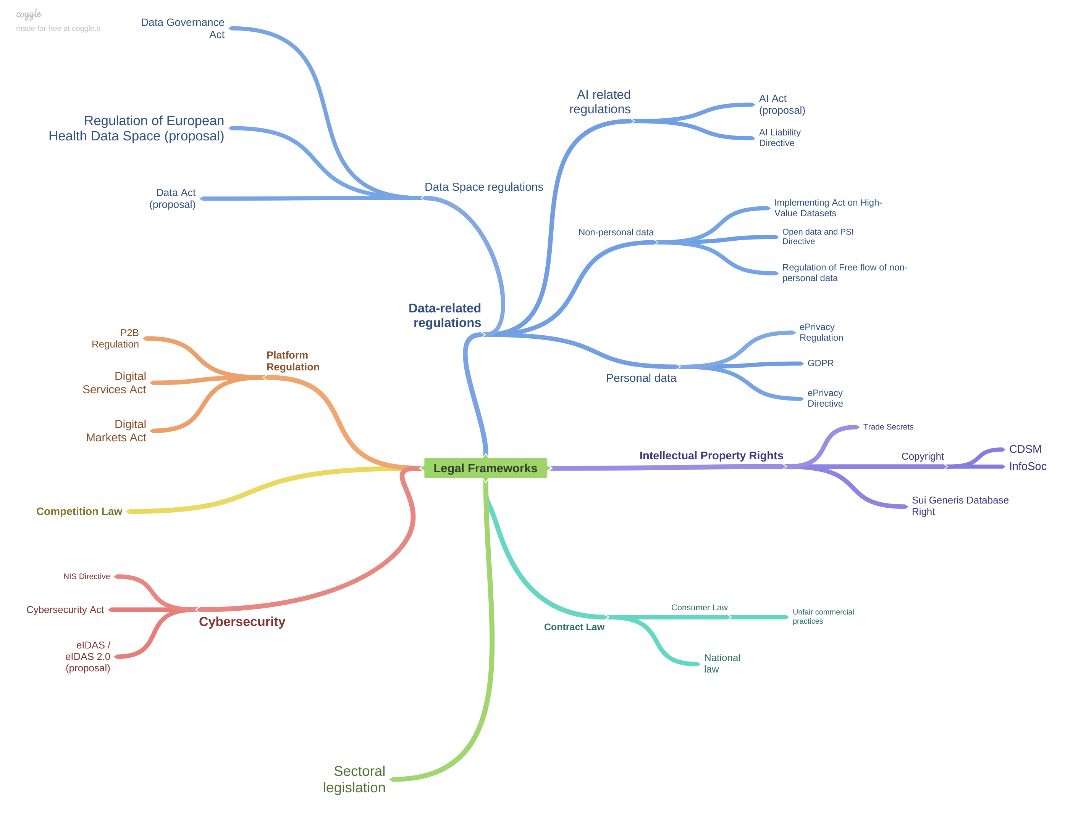FOR SHARE - JULY SNAPSHOT - LEGAL FRAMEWORK FOR DATASPACE - Regulatory Compliance - Two-pages description
Early draft
Please be aware that the Data Spaces Blueprint content shared in these pages are a very early draft published on 2023-07-01. The current draft is incomplete and the content might still change.
SAVE-THE-DATE 01-10/09/2023: We will welcome your feedbacks to future improve the Data Spaces Blueprint during the Public consultation that will open on September the 1st 2023 until September the 10th. Please mark these dates in your calendar and get ready!
Regulatory Compliance
Introduction
The regulatory compliance building block helps the participants of data space initiatives navigate the complex legal landscape and assess applicable legislative requirements. It clarifies the relationships between legal frameworks and the allocation of legal responsibilities and liabilities in data value chains. For any implementation of this building block to be an effective tool, it should provide concrete demand-based entry points to allow for easy and efficient consultation.
Goal
Why is this building block important? What problem does it resolve? What value does it bring to data spaces?
A number of legal issues affect the creation and the operation of data spaces and need to be addressed by the governance model. For example, it is important to ensure compliance with relevant horizontal legislation, such as data protection, competition and intellectual property laws. In addition, there may also be sector-specific and/or (sub)national legislation to be taken into account.
Addressing legal issues related to data spaces can be particularly challenging given:
the novelty of data spaces,
the complex mix of national and EU legal entitlements to data,
the evolving European legislative agenda, and
the intricate interplay between different regulatory instruments.
However, these regulatory aspects need to be considered sufficiently both when setting up and operating a data space.
In order to ensure that data spaces are compliant with legislation that is applicable to them, this building block should provide:
an overview of the legislation that is relevant to data spaces and of which compliance should be monitored in setting up and operating a data space;
identifying the interplay between legal frameworks and guidance on tackling potential conflicts that may arise in the context of a data space
checklists on important issues to be resolved or monitored;
best practices and practical examples (based on use cases) on assessing and maintaining compliance with regulatory requirements.
Key functions
A list of the main functions that the building block needs to fulfill, along with a brief description of each function.
· Function 1:
→ Identification of the relevant legal frameworks
· Function 2:
→ Navigating the complex legal landscape
· Function 3:
→ Assessing the applicable legal requirements
· Function 4:
→ Clarifying the relationships between legal frameworks
Interrelations
There is a strong link between the regulatory requirements applicable to a particular data space and the governance mechanisms and contractual frameworks that are put in place. A strong interrelation can be expected between these different elements.
Some of the legal aspects relevant in a specific case may also vary depending on the technical choices that are made. Likewise, regulatory requirements may influence what technical choices are viable.
Legal Landscape
What are the relevant legal frameworks for data spaces?
Below we provide a provisional mapping of the EU legal landscape for data spaces
Future outlook
This building block is still under development. The legal landscape included in this document has been put together on the basis of a scoping exercise as part of the work of the DSSC. Detailed analyses will further define the relevance and expected impact of the different legal frameworks on a data space.
A first iteration of this building block will include a first core list of legal frameworks to consider, with further iterations expanding the legal frameworks considered. Future iterations may also include frameworks related to specific sectors.
